How I got to work at Steer
Steer Boot Camp - Day 1 "It's All New To Me"
Steer Boot Camp - Day 2 "Food, Lots of Food"
Steer Boot Camp - Day 3 "So That's How You Do It"
Steer Boot Camp - Day 4 "Show Time"
Steer Boot Camp - Day 5 "Cabin Fever"
Steer Boot Camp - Day 6 "Front of House"
A Drink, Sir? Absolutely, thank you. I definitely like my alcoholic drinks, so was very excited about my wine and bar stint at Steer. Firstly, on Saturday, it was all about wines, guided by my new sommelier friend Manolo.
The lesson started with a description of the wines that are stocked at Steer, now extended to a whopping 500+ varieties. Manolo showed me the cabinets that housed the wines, as well as the store room downstairs. I asked him how he could remember all the wines, and he said by constantly studying and tasting. To test him out, I randomly picked a few wines from the list and asked him to describe it for me. He remembered what varieties they were and how they tasted. I was thoroughly impressed. We spoke about the different grape varieties as well as the regions of the world that produce wines. Manolo said that good wine can come from anywhere, with lots of new places such as Eastern Europe producing some very good stuff.
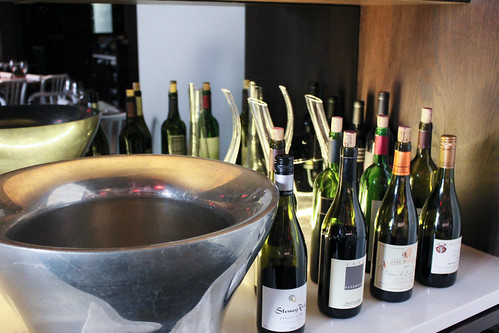
After talking about theory, it was time for some practise. We tasted all the wines by the glass varieties. This was about 20 wines and I really tasted how different they were when you have them back to back. Manolo taught me to smell each wine after swirling it, and to try and pick up the hints of flavour. It was quite hard at first but eventually I could pick the difference between fruity wines, oakey wines, tannic wines and all the other descriptions for wines. We also looked at the colour using a backlit light and looked at how the wine stuck to the glass. All these elements are part of the assessment and ultimately the enjoyment of the wine. I thought I would like all the lighter smoother wines but that wasn't true. Whilst I did like the smoother wines, I found some quite boring and liked the bold flavours that some other wines had. While some wines hit you at the front, others linger and gave a fantastic after taste.
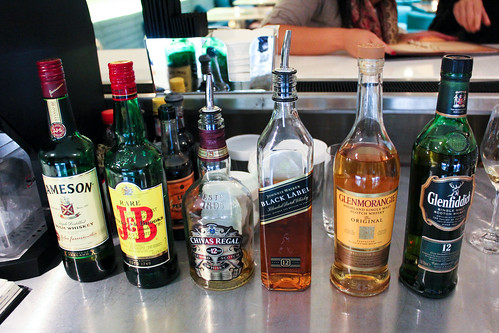
The last element of my wine class was how to serve customers. It was important that one never lies to a customer. If asked about a wine that you don't know, it's better to say so or recommend something that you did know about rather than lying about it. The next key was to always taste a wine when opening it. While the customer may try it as well, it's best to still try it beforehand. This ensures that the wine has not become corked and is still good to serve to the customer. When it came to opening the bottles, Manolo could have done it with his eyes closed. I had a lot more trouble and nearly broke a cork. We discussed the relevance of a cork and Manolo still prefers it. Me, I think that if screw cap technology had been around in the past, corks would never have been used. I do agree that corks have that romanticised feel, but other than that, it's more just tradition. I did like this funky opener Manolo had that wedged around the cork and then you slowly pull the cork up.
Once a bottle of wine is opened, some may need decanting. This is done by slowly pouring the wine into large glass vessels to let the wine breathe. Anywhere between 30 minutes to 1 hour of breathing is adequate. As with anything food related, it's all about personal preference. An expensive wine may be adored by most people, but if you don't like it, don't be scared to order something cheap that you enjoy. It's about drinking a wine that will make you happy and work with your meal.
On Sunday, it was Whisky Class time. I met up with Steer bartender David, and fellow blogger Penny, to learn more about bartending, whisky and bourbon. First off the bat, I was dying to try a caipirinha, which I had seen diners drinking all week. The caipirinha is made with cachaca, Brazil's most common distilled alcoholic beverage. It's basically made from sugarcane and makes for a delicious cocktail. Since Penny had already learnt to make the cocktail, she instructed me on how to make it. I made the same mistake as most people but trying to crush the limes by pounding directly into the glass. David said this will likely result in a broken glass and the key to tilt the glass at 45 degrees, cushion it with your pinky finger and then slowly crush the limes. The cocktail was so refreshing and I loved it.
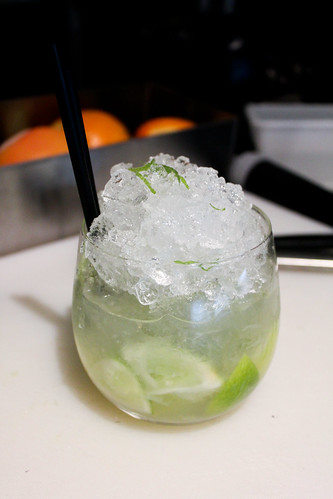
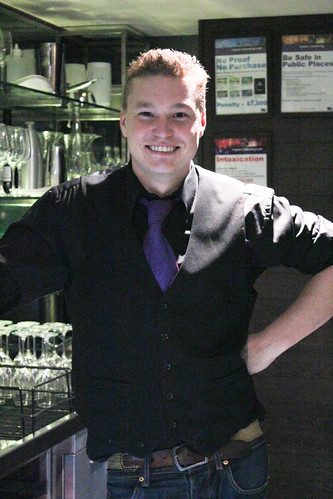
Next, David passed on his extensive knowledge of whisky to us. He explained that whisky originated from Scotland and that there were a few main regions in Scotland for whisky, each resulting in different flavours. Good whiskys use less of the distillation (with the head thrown away), use clearer water, aged in good oak barrels and may be aged longer.
Like my wine tasting the previous night, tasting one whisky right after another really highlighted their differences. Price, again, was not a good judge of what I liked. I tended to prefer the blended whiskys and the ones that were smoother. On the whole, the longer aged whiskys definitely had more refined flavours, but I really didn't like the smokey ones. Whilst those were David's favourite, I couldn't handle them and choked on that really smokey flavour. That was the most surprising thing for me, that you can really pick different flavours from whisky, from fruity to oakey to mouldy grass.
When we were finished with whisky tasting, it was onto bourbons, which is actually a whisky with a higher corn ration. Like whiskys, bourbons need to derive from a particular region, being Kentucky. I found bourbons to be rougher and stronger in flavour but still with finesse. I didn't enjoy them as much as whiskys but there were still some good ones, not your usual Jim Beam. These had more depth to them and could be drunk alone rather than mixed with Coca Cola. David said that bourbons had a bad reputation as they were associated with bogan youths drinking until they couldn't walk anymore. In reality, bourbons are very complex drinks that can be enjoyed by everyone.
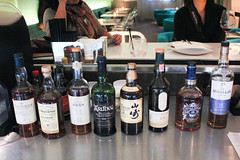
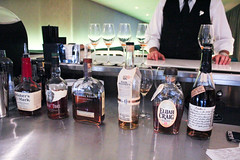
By the end of the night, I had learnt a lot about bartending, whisky and bourbons. I was also a bit tipsy and definitely recommend that you don't try 20 whiskys/bourbons in one night.
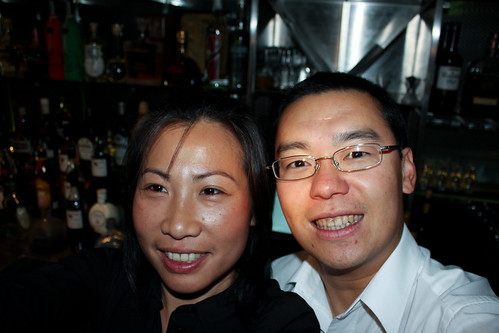
It was fantastic to learn about wines, bartending, cocktails and spirits from Manolo and David. Both had vast knowledge on their fields and are constantly learning as well. The information that they passed onto me really gave me a better understanding of alcoholic beverages and I'll be using that knowledge to make better choices and pick drinks that I'll like more and match my food.
You can follow me on Twitter, Facebook and view the Flickr stream for more photos.
Flickr
I am so in need of a drinks class. My dad is quite knowledgeable with his spirits - he's always making cocktails - but I'm quite limited. I would love to learn about wines in particular. Great lesson you had!
ReplyDeleteHeidi xo
Just finished a weekend of wine...i love touching those super expensive wine!!! But of course, I prefer to taste it ;)
ReplyDeleteHeidi, it was such a privilege to have those classes. I had thought of paying money to attend a whisky class in the past. You can really taste the difference in the wines when you really concentrate on tasting it.
ReplyDeletePenny, just don't take those super expensive bottles home. I prefer to taste as well.